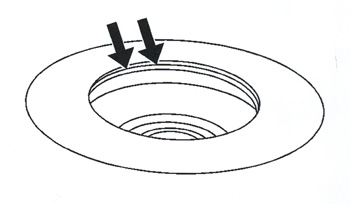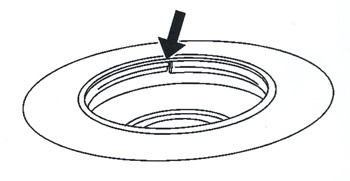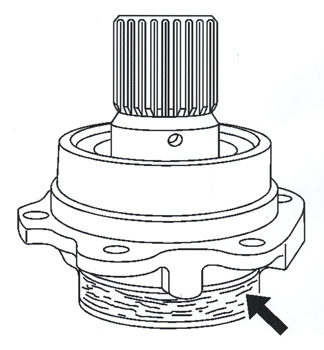 Models:
Models:
1998-2002 Cadillac Eldorado
1998-2004 Cadillac Seville
1999-2004 Cadillac DeVille
2000-2003 Oldsmobile Aurora
Equipped with 4T80-E Automatic Transaxle RPO MH1
Some customers may comment on the Service Engine Soon (SES) light being illuminated and a chuggle or surge being felt when driving at higher speeds. Technicians may observe on the Tech 2, an excessive torque converter clutch (TCC) slip speed and DTC P0741 set as Current or in History.
Cause
– This condition may be caused by seal damage that allows the TCC apply fluid to leak into the channel plate, causing excessive TCC slippage under certain operating conditions, eventually resulting in a total loss of TCC apply fluid pressure.
 – The TCC may have partial apply fluid pressure or no apply fluid pressure. If excessive slip speed is noted on the Tech 2 and the condition/cause cannot be corrected by using the DTC P0741 diagnostic information, then worn seals from slippage of the drive sprocket bearing inner race on the drive sprocket are indicated.
– The TCC may have partial apply fluid pressure or no apply fluid pressure. If excessive slip speed is noted on the Tech 2 and the condition/cause cannot be corrected by using the DTC P0741 diagnostic information, then worn seals from slippage of the drive sprocket bearing inner race on the drive sprocket are indicated.
Correction
Repair the transaxle. Do not replace the complete transaxle assembly.
Diagnostic and Repair Procedure
1. Remove the transaxle from the vehicle. Refer to Transmission Replacement in SI.
2. Remove the torque converter from the transmission.
3. Install the holding fixture to the transaxle. Refer to Holding Fixture Installation, Document ID #513730 in SI.
4. Remove the transaxle side cover, upper valve body and case cover. Refer to Unit Repair Information in SI.
5. Inspect the two case cover seals (34 and 35) for uneven wear patterns. See Figure 1. The wear patterns will be evident by an uneven wear pattern of the inner diameter white seal surface.
6. Inspect the two case cover seals (34 and 35) for splits/tears and/or flat spots. See Figure 2.
 7. Inspect the support drive socket (400) for wear on the bearing race. See Figure 3.
7. Inspect the support drive socket (400) for wear on the bearing race. See Figure 3.
8. Inspect the case cover (33) for wear or damage due to the drive sprocket bearing spinning in the bore.
Important:
– During the tear-down inspection, pay particular attention to seals (34, 35, 409 and 412) for wear or damage.
– Seals 34, 35, 409 and 412 are part of Gasket Kit, P/N 24231068, and do not need to be ordered separately.
– Replace the Torque Converter when servicing a vehicle with this condition.
– Flush the transaxle cooler with Transflow cooler flushing tool, J 45096.
9. Replace only the necessary internal transaxle components per the tear-down inspection.
Courtesy of Mitchell 1.













